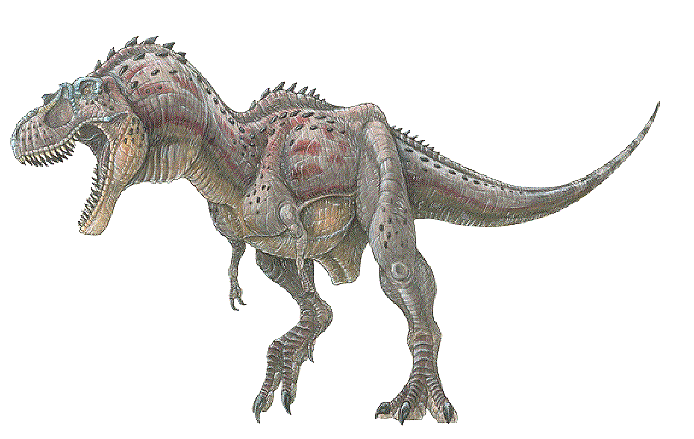|
|
|
Gorgosaurus libratus (Osborn, 1905) |
 |
|
Name Means: |
"Gorgon Lizard" |
Length: |
25 - 30 feet (7 - 9 m) |
|
Pronounced: |
al-BURR-to-SORE-us |
Weight: |
1-2 tons(900 - 1,800 kilos) |
|
When it lived: |
Late Cretaceous period, about 76-74
million years ago. |
|
|
|
Where found: |
Alberta, Canada |
|
|
|
|
Introduction |
Gorgosaurus
was a member of the tyrannosaur family that was first described by
paleontologist Lawrence Morris Lambe in 1914. Over 20 Gorgosaurus
skeletons have been recovered, making it the most well-represented
tyrannosaurid in the fossil record. They were found in western
Canada and the United States.
Generally similar to Tyrannosaurus and most other large
tyrannosaurids, Gorgosaurus had a massive head, large curved
teeth, tiny two-fingered front limbs, and powerful legs. Compared to
the other tyrannosaurids, Gorgosaurus is most similar to its
very close relative Albertosaurus.
Gorgosaurus was named for the Gorgons, who were three
mythical Greek monsters (sisters) with snakes for hair - they turned
people who looked at them to stone. The name remained in use
until the 1970s when a major study of the family
Tyrannosauridae concluded that Gorgosaurus and Albertosaurus
were the same genus, and that the only differences between the two
were suggested not only by comparisons of dissimilar growth stages,
but also by variations between populations. Albertosaurus was
named first, so according to the rules of biological nomonclature, its
name had priority. Gorgosaurus libratus became Albertosaurus
libratus.
However, recent work done by paleontologist Phillip Currie at
the Royal Tyrrell Museum of Paleontology has shown that these two
dinosaurs are, in fact, separate and valid genera.
Thus the original genus name has been restored and Albertosaurus
libratus is once again Gorgosaurus. |
|
|
|
|
|
|
|
|
Edugraphics.Net | Feenixx Publishing |
|
|
|
|
